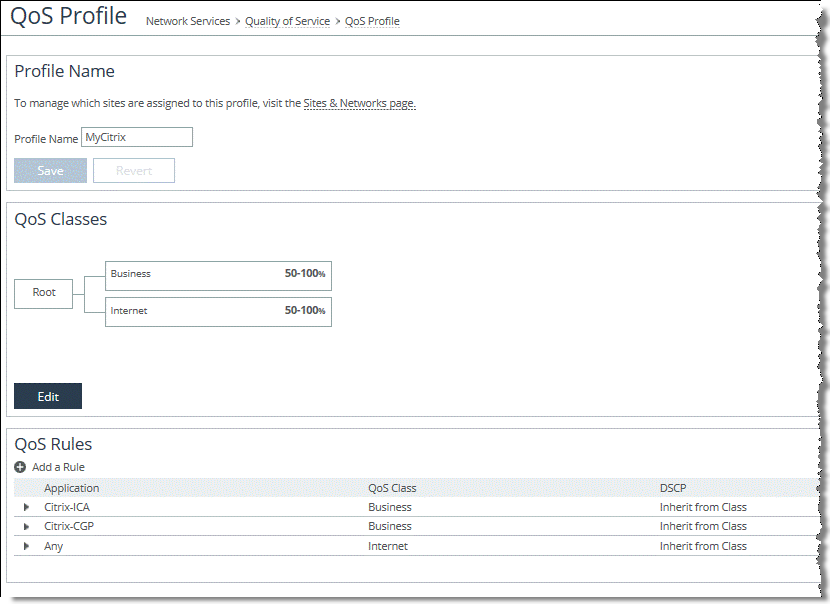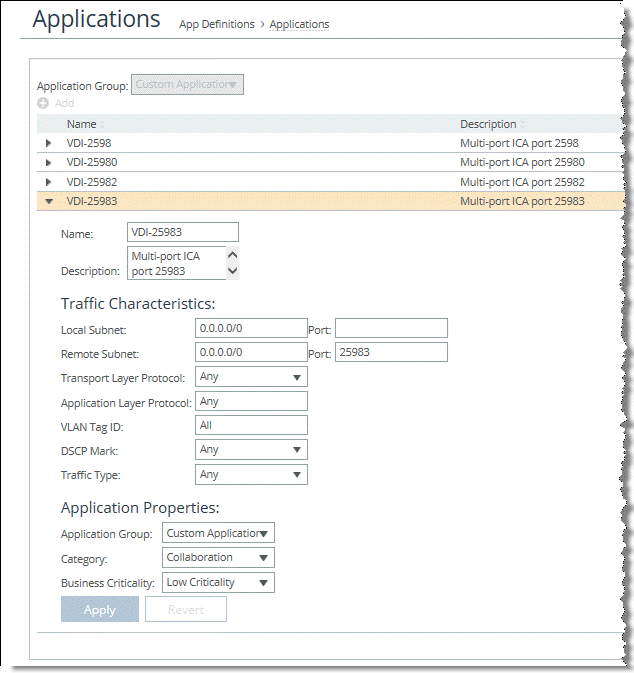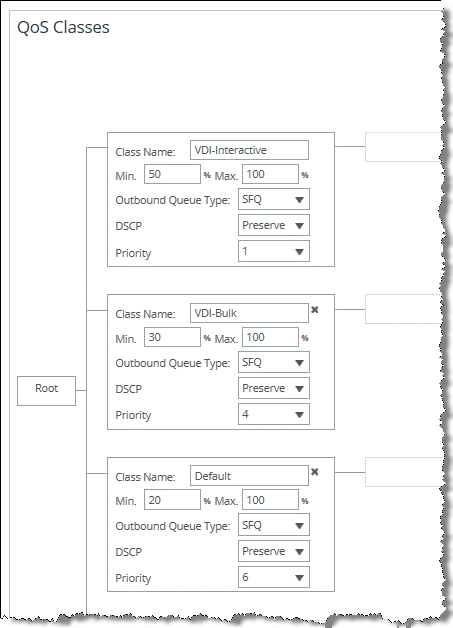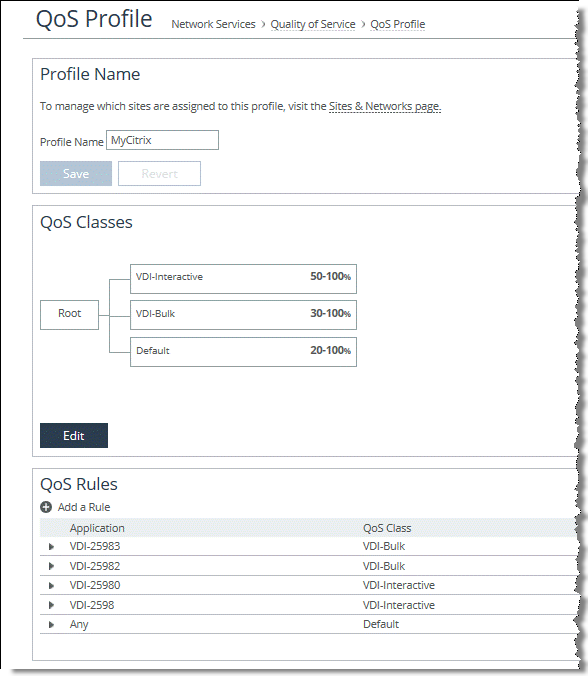QoS Classification for Citrix Traffic
RiOS v6.0 and later enables you to classify Citrix traffic using QoS to prioritize the delivery of Citrix ICA traffic according to the ICA priority groups. QoS classification for Citrix traffic is beneficial in mixed-use environments in which Citrix users perform printing and use client drive-mapping features. Using QoS to classify Citrix traffic in a mixed-use environment improves the desktop computing experience for end users.
These RiOS QoS capabilities ensure optimal delivery of Citrix traffic over the network:
Latency priority - Latency priority enables you to assign Citrix interactive traffic a higher priority than print or CDM traffic. A typical priority setting for interactive Citrix sessions, such as screen updates, is real-time or interactive. Remember that priority is relative to other classes in your QoS configuration. Bandwidth allocation for traffic shaping - When configuring QoS, you must allocate an appropriate amount of bandwidth for each QoS traffic class. The amount you specify is divided equally among all traffic flows with that class of traffic. Bandwidth allocation is important to ensure that a given traffic class has a minimum amount of bandwidth to perform on the network. While at the same time, the amount of bandwidth assigned to that traffic must not overrun the network and starve out other applications competing for network bandwidth. For more information about configuring QoS, see the SteelHead Deployment Guide.
RiOS v9.0 or later does not support Packet-Order Queue. Riverbed recommends that you use SFQ when you configure QoS for Citrix ICA traffic in RiOS v9.0 or later.
You can use the Riverbed Application Flow Engine (AFE) to classify Citrix ICA traffic. The AFE recognizes Citrix traffic on TCP port 1494 (Citrix-ICA) and port 2598 (Citrix-CGP). Use AFE to classify Citrix ICA traffic into a QoS class that is assigned with a higher priority than the QoS classes for other network traffic (
Figure 5‑9).
Figure 5‑9. Classifying Citrix ICA Traffic with AFE

To configure QoS for multi-stream and multi-port ICA traffic
Define the Citrix application using TCP header rules in accordance to the TCP ports that you have configured in the multi-port Citrix computer policy. (
Figure 5‑10).
Figure 5‑10. Citrix Application Definition Using TCP Header Rules for Multi-Stream and Multi-Port ICA Traffic

Define the QoS Class for Citrix interactive traffic, print traffic, and CDM traffic (
Figure 5‑11).
Figure 5‑11. QoS Class Definition for Multi-Stream and Multi-Port ICA Traffic

Define the QoS profile for multi-port ICA traffic using QoS rules that map the Citrix application into the appropriate QoS class (
Figure 5‑12).
Figure 5‑12. QoS Profile for Multi-Stream and Multi-Port ICA Traffic






